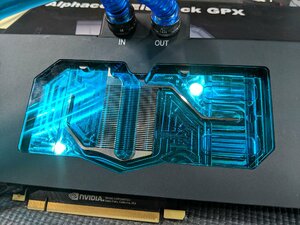- Joined
- May 18, 1997
- Messages
- 55,625
We show you the AlphaCool Eisblock for RTX 2080 Ti and just how the coolant flows through the block. If you have a 4K display, you will want to go full screen with this short clip. This is the GPX-N Plexi M01 model. It is on sale at Amazon for $172., complete with Frag Harder Disco Lights! You can see our preliminary coverage here.
As an Amazon Associate, HardForum may earn from qualifying purchases.
![[H]ard|Forum](/styles/hardforum/xenforo/logo_dark.png)

